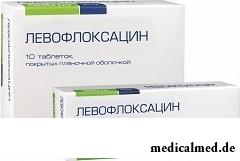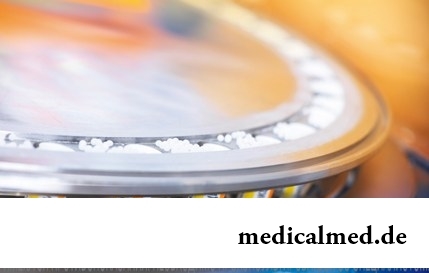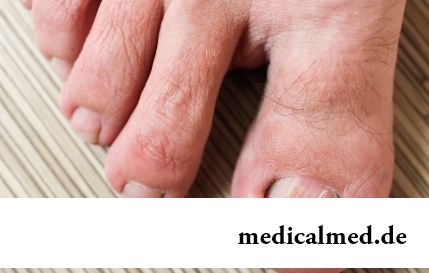





Levofloxacin
Application instruction:
 Levofloxacin – antibacterial drug.
Levofloxacin – antibacterial drug.
Form of release and structure
Levofloxacin is produced in the following dosage forms:
- Tablets, film coated: biconvex, round, yellow, on cross section two layers are visible (on 5, 7 or 10 pieces in blister strip packagings, on 1-5 or 10 packagings in a cardboard pack; on 3 pieces in blister strip packagings, on 1 packaging in a cardboard pack; on 5, 10, 20, 30, 40, 50 or 100 pieces in banks or bottles, after 1 bank or to a bottle in a cardboard pack);
- Solution for infusions: transparent, yellowish-green color (on 100 ml in bottles or bottles, on 1 bottle or a bottle in a cardboard pack);
- Drops eye 0,5%: transparent, yellowish-green color (on 1 ml in tubes droppers, on 2 tubes in a cardboard pack; on 5 or 10 ml in bottles with a cover dropper, on 1 bottle in a cardboard pack).
Is a part of 1 tablet:
- Levofloxacin – 250 or 500 mg (гемигидрат a levofloksatsina – 256,23 or 512,46 mg);
- Auxiliary components (tablets on 250 or 500 mg respectively): microcrystallic cellulose – 30,83/61,66 mg, a gipromelloza – 8,99/17,98 mg, croscarmellose sodium – 9,3/18,6 mg, polysorbate 80 – 1,55/3,1 mg, calcium stearate – 3,1/6,2 mg.
Structure of a cover (a tablet on 250 or 500 mg respectively): a gipromelloza – 7,5/15 mg, hydroxypropyl cellulose (hypro rod) – 2,91/5,82 mg, talc – 2,89/5,78 mg, titanium dioxide – 1,63/3,26 mg, yellow iron oxide (oxide yellow) – 0,07/0,14 mg or dry mix for a film covering (a gipromelloza of 50%, a hypro rod (hydroxypropyl cellulose) – 19,4%, talc – 19,26%, titanium dioxide – 10,87%, yellow iron oxide (oxide yellow) – 0,47%) – 15/30 mg.
For infusions is a part of 100 ml of solution:
- Active agent: levofloxacin – 500 mg (in the form of a gemigidrat);
- Auxiliary components: sodium chloride – 900 mg, water for injections – to 100 ml.
Eye is a part of 1 ml of drops:
- Active agent: levofloxacin – 5 mg (in the form of a gemigidrat);
- Auxiliary components: chloride a benzalkoniya – 0,04 mg, sodium chloride – 9 mg, эдетат dinatrium – 0,1 mg, solution of Acidum hydrochloricum of 1 M – to рН 6,4, water for injections – to 1 ml.
Indications to use
Levofloxacin in the form of tablets and solution for infusions is appointed at treatment of the following infectious and inflammatory diseases caused by microorganisms, sensitive to effect of its active agent:
- Acute sinusitis (tablets);
- Exacerbation of chronic bronchitis (tablet);
- Infections of soft tissues and integuments (tablet);
- Bacterial prostatitis;
- Community-acquired pneumonia;
- The uncomplicated and complicated infections of urinary tract, including pyelonephritis;
- The bacteremia/septicaemia connected with the indications stated above;
- Intraabdominal infections;
- Drug resistant forms of tuberculosis (infusion solution, along with other medicines).
Drops eye are appointed at the infections of front department of an eye caused by microorganisms, sensitive to action of a levofloksatsin.
Contraindications
- Age till 1 year (a drop eye), up to 18 years (tablets and infusion solution);
- Pregnancy and period of a lactation;
- Hypersensitivity to components of drug or to other hinolona.
Additional contraindications to Levofloksatsin's use in the form of tablets and infusion solution are:
- Damages of sinews at earlier carried out treatment of a hinolonama;
- Epilepsy;
- The renal failure at clearance of creatinine is less than 20 ml a minute (tablets);
- The extended interval of Q-t (infusion solution);
- Simultaneous use with the antiarrhytmic drugs IA of a class (quinidine, procaineamide) or the III class (Amiodaronum, соталол) (infusion solution).
Levofloxacin in these dosage forms should be applied with care to elderly patients (because of high probability of the accompanying decrease in function of kidneys), and also the patient with deficit glyukozo-6-fosfatdegidrogenazy.
Route of administration and dosage
Levofloxacin in the form of tablets is accepted inside, washing down with enough liquid (from 0,5 to 1 glasses), it is more preferable – before food or between meals. It is not necessary to chew tablets. Frequency rate of administration of drug – 1-2 times a day.
Infusion solution of Levofloksatsin is entered intravenously, kapelno, slowly. Duration of introduction of 100 ml of infusion solution (500 mg) has to be not less than 60 minutes 1-2 times pass. Depending on a condition of the patient in several days of therapy it is possible to pass to oral administration of drug without change of the mode of dosing.
Doses and duration of use of drug are defined by weight and the nature of an infection, and also sensitivity of the estimated activator.
At normal or moderately reduced function of kidneys (at clearance of creatinine> 50 ml a minute) the following mode of dosing of Levofloksatsin in the form of tablets and infusion solution is recommended to apply:
- Sinusitis: once a day on 500 mg, a course – 10-14 days (tablet);
- Exacerbation of chronic bronchitis: once a day on 250 mg or on 500 mg, a course – 7-10 days (tablet);
- Infections of skin and soft tissues: once a day on 250 mg or 1-2 times a day on 500 mg, a course – 7-14 days (tablet);
- Drug resistant forms of tuberculosis: 1-2 times a day on 500 mg, a course – up to 3 months (infusion solution, along with other medicines);
- Community-acquired pneumonia: 1-2 times a day on 500 mg, a course – 7-14 days;
- Bacterial prostatitis: once a day on 500 mg, a course – 28 days;
- Uncomplicated infections of urinary tract: once a day on 250 mg, a course – 3 days;
- The complicated infections of urinary tract, including pyelonephritis: once a day on 250 mg, a course – 7-10 days;
- Septicaemia/bacteremia: 1-2 times a day on 250 mg or on 500 mg, a course – 10-14 days;
- Intraabdominal infection: once a day on 250 mg or on 500 mg, a course – 7-14 days (along with use of the antibacterial medicines operating on anaerobic flora).
After a hemodialysis or continuous out-patient peritoneal dialysis of introduction of additional doses it is not required to patients.
At clearance of creatinine <50 ml a minute decrease in doses and increase in intervals between administration of drug is required.
With functional disturbance of a liver of special selection of doses it is not required to patients.
By drug not less than 48-78 hours after normalization of body temperature or after the recovery confirmed with laboratory researches are recommended to continue therapy (as well as in a case with other antibiotics).
Levofloxacin in the form of drops eye is applied locally. It is necessary to dig in drug in a conjunctival sac on 1-2 drops in one or both struck eyes. Usually apply the following scheme of therapy:
- 1-2 day: each 2 hours (to 8 times a day);
- 3-7 day: each 4 hours (to 4 times a day).
Duration of therapy makes 5-7 days.
At combined use of several local ophthalmologic medicines between instillations it is necessary to observe a break of 15 minutes.
To avoid solution pollution, to touch fabrics around an eye and a tip of a dropper does not follow centuries.
Side effects
At Levofloksatsin's use in the form of tablets and infusion solution there can be disturbances from some systems of an organism:
- Alimentary system: often – nausea, diarrhea, increase in activity of enzymes of a liver (for example, aspartate aminotransferases and alaninaminotranspherases); sometimes – digestion disturbances, loss of appetite, an abdominal pain, vomiting; seldom – diarrhea with impurity of blood which seldom or never can be a symptom of an inflammation of intestines and/or pseudomembranous colitis;
- Cardiovascular system: seldom – lowering of arterial pressure, the strengthened heartbeat; very seldom – a shocklike (vascular) collapse; in some cases – lengthening of an interval of Q-T;
- Nervous system: sometimes – a headache, catalepsy and/or dizziness, sleep disorders, drowsiness; seldom – psychotic reactions like depressions and hallucinations, concern, a shiver, paresthesias in hands, the excited state, confusion of consciousness and a spasm; very seldom – a hearing disorder and sight, disturbances of sense of smell and flavoring sensitivity, decrease in tactile sensitivity;
- Urinary system: seldom – increase in level of creatinine and bilirubin in blood serum; very seldom – intersticial nephrite, deterioration in function of kidneys up to an acute renal failure;
- Musculoskeletal system: seldom – damages of sinews (including a tendinitis), muscular and joint pains; very seldom – a rupture of sinews (for example, an Achilles tendon), muscular weakness (it is necessary to consider the patient with a bulbar syndrome); in some cases – muscular defeats (рабдомиолиз);
- Bodies of a hemopoiesis: sometimes – increase in number of eosinophils, decrease in quantity of leukocytes; seldom – thrombocytopenia, a neutropenia; very seldom – an agranulocytosis and development of heavy infections (deterioration in health, recurrent or resistant fervescence); in some cases – hemolitic anemia, a pancytopenia;
- Metabolism: very seldom – decrease in concentration of glucose in blood that is important for patients with a diabetes mellitus (possible symptoms of a hypoglycemia: increase in appetite, perspiration, nervousness, shiver); perhaps – a porphyria aggravation (in the presence of a disease);
- Allergic reactions: sometimes – erubescence and an itch; seldom – the general reactions of hypersensitivity (anaphylactoid and anaphylactic) with such signs as narrowing of bronchial tubes, a small tortoiseshell, it is possible – heavy suffocation; very seldom – hypostases of mucous membranes and skin (for example, in a throat and a face), a sudden sharp lowering of arterial pressure and shock, hypersensitivity to ultra-violet and to sunlight, a vasculitis, an allergic pneumonitis; in some cases – heavy skin rashes with blistering (for example, a toxic epidermal necrolysis (Lyell's disease), Stephens-Johnson's syndrome and an exudative mnogoformny erythema). Easier skin reactions can sometimes precede development of the general reactions of hypersensitivity. The listed above reactions can arise in a few minutes after reception of the first dose or several hours later after administration of infusion solution;
- Others: sometimes – the general weakness; very seldom – fever;
- Local reactions (at use of infusion solution): reddening, pain in an injection site, phlebitis.
Levofloksatsin's use can normalize to change of the microflora which is present at the person because of what there can be a strengthened reproduction of the mushrooms and bacteria showing resistance to effect of drug. In rare instances it can demand additional therapy.
At Levofloksatsin's use in the form of drops eye development of the following side effects is possible:
- Often (1-10%): reddening of eyes, short burning in an eye, decrease in visual acuity;
- Infrequently (0,1-1%): emergence of slime in the form of tyazhy;
- Seldom (0,1-0,01%): хемоз, a blepharitis, emergence of follicles and papillary growths on a conjunctiva, an erythema a century, a syndrome of "a dry eye", a photophobia, an itch and eye pain, a headache, allergic reactions, rhinitis.
Chloride a benzalkoniya is a part of drops eye that can cause irritation of eyes and contact dermatitis.
Special instructions
It is impossible to apply Levofloxacin at treatment of children and teenagers because of probability of damage of joint cartilages.
At use of drug for elderly patients it is necessary to consider that at patients of this group function of kidneys is often broken.
At the heavy pneumonias caused by pneumococci, drug can not give optimum therapeutic effect. Some of the hospital infections caused by certain activators (P. aeruginosa) can demand carrying out a combination therapy.
During Levofloksatsin's use for the patients with the previous damage of a brain connected, for example, with a severe injury or a stroke development of an attack of spasms is possible.
The photosensitization during therapy is noted seldom or never, however artificial ultra-violet or power solar irradiation is not recommended to be exposed without special need to patients.
At suspicion on development of pseudomembranous colitis Levofloxacin needs to be cancelled immediately, having begun performing the corresponding treatment. It is impossible to use the drugs oppressing motility of intestines in these cases.
Tendinitis (first of all, an Achilles tendon inflammation) which seldom arises at Levofloksatsin's use, can lead to a rupture of sinews (patients of advanced age are more inclined to its development). At use of glucocorticosteroids, most likely, the risk of a rupture of sinews increases. At suspicion on a tendinitis it is necessary to stop immediately use of drug and to begin the corresponding therapy of the affected sinew.
Patients with an inherited disorder of exchange processes (at insufficiency glyukozo-6-fosfatdegidrogenazy) can react to ftorkhinolona destruction of erythrocytes (hemolysis). Treatment of such patients needs to be carried out carefully.
When carrying soft contact lenses it is not recommended to apply drops eye as the chloride which is Levofloksatsin's part the benzalkoniya can be absorbed by them, making an adverse effect on eye tissues, and also to cause discoloration of contact lenses.
At emergence after an instillation of drug of passing decrease in visual acuity it is not necessary to manage motor transport or to carry out potentially dangerous types of works to its complete recovery.
Such side effects of Levofloksatsin as catalepsy, dizziness, visual disturbances and drowsiness can worsen ability to concentration of attention and speed of response. It can be a certain risk in situations when it plays an important role (for example, when working in unstable situation, control of motor transport, service of mechanisms and cars).
Medicinal interaction
At simultaneous use of Levofloksatsin with some medicines there can be undesirable effects:
- Hinolona: the expressed reduction of the threshold of convulsive readiness;
- Sukralfat, magnesium - or aluminum-bearing antiacid drugs, iron salts: considerable weakening of action of a levofloksatsin (it is necessary to observe a break between receptions of medicines not less than 2 hours);
- Antagonists of vitamin K: disturbance of coagulant system of blood (control is necessary);
- Cimetidinum, пробеницид: the renal clearance of a levofloksatsin is slightly slowed down (treatment should be carried out with care, first of all at patients with bounded function of kidneys);
- Cyclosporine: increase in the period of its semi-removal;
- Glucocorticosteroids: increase in risk of a rupture of sinews.
At Levofloksatsin's use in the form of drops eye development of medicinal interaction with other drugs is improbable.
Terms and storage conditions
To store in protected from light, the place, dry, unavailable to children, at a temperature up to 25 °C.
Period of validity:
- Tablets, infusion solution – 2 years;
- Drops eye – 3 years.
After opening of a bottle with drops, Levofloxacin can be applied within 4 weeks.
Name of drug
Price
Drugstore
Levofloxacin тбл п/пл/о 250 mg No. 5, Vertexum of closed joint stock company
290 rub.
 Network of the Moscow drugstores of IFC
Network of the Moscow drugstores of IFCLevofloxacin тбл п/пл/о 500 mg No. 5, Vertexum of closed joint stock company
346 rub.
 Network of the Moscow drugstores of IFC
Network of the Moscow drugstores of IFCStatistically, on Mondays the risk of getting injured of a back increases by 25%, and risk of heart attack – for 33%. Be careful.

Childbirth is the most important event in life of each woman. We are women we give birth to the new little man on this light. Now...
Section: Articles about health
Climax - process of fading of reproductive function of an organism in process of its aging. At women the main sign of its approach is the termination of a menstrual cycle. Officially the menopause is diagnosed when periods are not observed in течен...
Section: Articles about health
There is a lot of fans of beer in our country. Statistically, on each average Russian (including women and children) in a year about 60 liters of this drink are consumed. It is not a lot of, as in the Czech Republic or Germany, but figure all the same impressive. There is nothing to rejoice here: despite assurances of producers that beer is absolutely harmless, effects of its active consumption cannot be considered positive in any way. Here only part of that negative impact, which popular нап...
Section: Articles about health
Cystitis, or inflammation of a mucous membrane of a bladder, this very widespread disease, which, owing to some persons...
Section: Articles about health
For many spouses the question of planning of a family is one of the main. The problem of the choice of effective and safe contraceptives at the same time comes out on top. Russians still not often resort to operation of a vasectomy extremely popular in the USA...
Section: Articles about health
Such trouble as the milkwoman's attack, at least once in life happened almost to each woman. Prevalence of a disease is explained by the fact that the causative agent of an illness belongs to the so-called opportunistic microflora living on mucous membranes of any human body and which is becoming more active only under favorable conditions. If you had curdled allocations from a vagina, the itch and burning in external genitals, or painful feelings disturb at sex...
Section: Articles about health
For the help to doctors in the choice of optimal solutions for treatment of various diseases the Cochrane scientific organization (Cochrane) will see off совм...
Section: Articles about health
The business lady, the become mother, it is necessary to solve an array of problems. But of them is main: how to combine the beloved child and work? What traps trap the working mother and how she needs to behave?...
Section: Slideshow
Extracorporal fertilization – one of the most modern methods of controlling with infertility. So far he already helped a significant amount of married couples to become happy parents. Usually to the EKO procedure difficult and very expensive, resort in those situations when all other ways to help couple to bring the child are inefficient. "Conception in a test tube" yields quite good results in cases of infertility of one of partners, existence at the woman of impassability of uterine tubes...
Section: Articles about health
The metabolism at each person proceeds in own way. However dependence between the speed of this process and disposal from superfluous in...
Section: Articles about health
The mankind knows that some toxins at intake in the minimum quantities have therapeutic effect from an extreme antiquity. Many substances recognized poisonous are applied in the medical purposes also today, being the main deystvuyushch...
Section: Articles about health
Statistically, in Russia about 34% of citizens smoke. Most of consumers of tobacco has problems with health sooner or later. Not only smokers, but also their relatives suffer. Besides, cigarettes are expensive, and need of their acquisition goes a heavy burden on the budget of thousands of Russian families. Many people dream to refuse harmful tendency, but everyone manages to make it not: nicotine addiction is affectionate and to get rid of it not easy....
Section: Articles about health
It is pleasant to state a possibility of improvement of quality of life of people with problems of functioning of secretory system. By efforts that...
Section: Articles about health
Each woman has preferences in the field of use of those goods which help us to look good, feel young and effective. Besides: selection process of favourite perfume, shampoo or decorative cosmetics already lifts a spirit...
Section: Articles about health
Sooner or later hair turn gray at all. Many people try to hide these changes, returning natural color of the hair by means of coloring, or considerably changing it for the purpose of creation of absolutely new image. All know that the gray hair is a sign of the coming old age, so, it is necessary to get rid of it....
Section: Articles about health
The phenomenon of the panic attack is known long ago, but the reasons of its emergence still are up to the end not found out. It is established that more than 30%...
Section: Articles about health
A little more than a century ago goat milk was a traditional food stuff of most of Russians. Unfortunately, today on tables of our compatriots it appears extremely seldom. The reason that the use of so useful product practically descended on...
Section: Articles about health
Ability of an organism to resist to adverse environmental factors (to impact of temperature drops, humidity and pressure, to the attacks of causative organisms, etc.) directly depends on what the person eats. Business here not only in that cells of a body received a necessary set of nutrients, vitamins and microelements. Scientists established that such components which are capable to influence negatively immune system, in connection with also are a part of foodstuff...
Section: Articles about health
Maternal milk is the best food for the newborn. It is the unique natural product containing optimum set...
Section: Articles about health
Heart disease and blood vessels lead to disturbance of blood supply of bodies and fabrics that involves failures in their work, deterioration in health of the person, decrease in its working capacity and standard of living. Annually such perishes from pathologies more...
Section: Articles about health
Subfebrile temperature call fervescence to 38 degrees, and subfebrile condition - existence of such temperature over 3 days, and quite often it happens without the visible reasons. Existence of subfebrile condition - a strong indication of disturbances in an organism which can be caused by various reasons: disease, stresses, hormonal failures. Despite the seeming inoffensiveness it is a state at which people often continue to lead a usual life, often is a sign of many of a zabolev...
Section: Articles about health
Very often as a source of the infection which caused a disease serves our house - the place which a priori has to be safe. However...
Section: Articles about health
At this plant there are a lot of names: tuberiferous sunflower, Jerusalem artichoke, solar root, earth pear. Contrary to popular belief, it is not an exotic plant at all. The wild girasol grows in a midland of Russia practically everywhere: at the edges of roads...
Section: Articles about health
The pine is one of the most widespread plants of our woods. Its needles and pitch not without reason called by "gallipot" were since ancient times used for strengthening of protective forces of an organism, treatment of avitaminosis, anemia and many other diseases. In recent years wide popularity was gained by the national medicines prepared from pinecones. "Fruits" of a coniferous tree contain a huge amount of vitamins, biologically active agents, antioxidants, phytoncides and other useful to...
Section: Articles about health
In consciousness of our many compatriots idea that folk remedies if no more эфф strongly took roots...
Section: Articles about health
The word "onikhokriptoz" is unfamiliar to most of people, meanwhile quite so physicians call very widespread problem: the growing of edge of a nail into surrounding fabrics causing inflammatory process. Usually the illness affects thumbs of legs, and is followed покр...
Section: Articles about health
Zone hypostases under eyes - very widespread problem giving to people is a lot of inconvenience. Hypodermic fabric in these parts has very loose structure and almost does not contain collagenic fibers. Besides, the skin covering подглазья constantly is exposed to compression and stretching when the person blinks, blinks, etc. These features also create premises for emergence of the so-called bags which are giving to the face a tired and sickly look, and also visually adding increased...
Section: Articles about health

